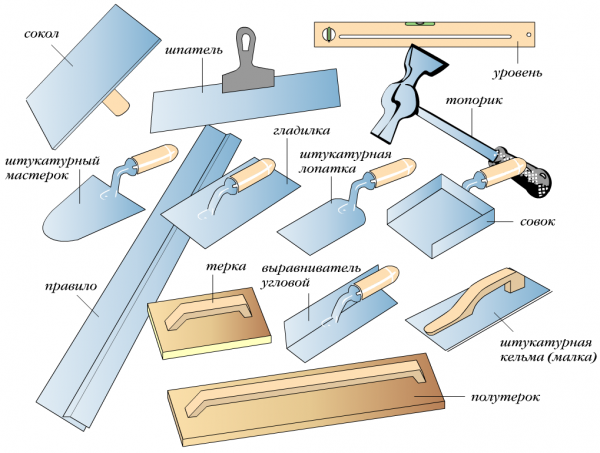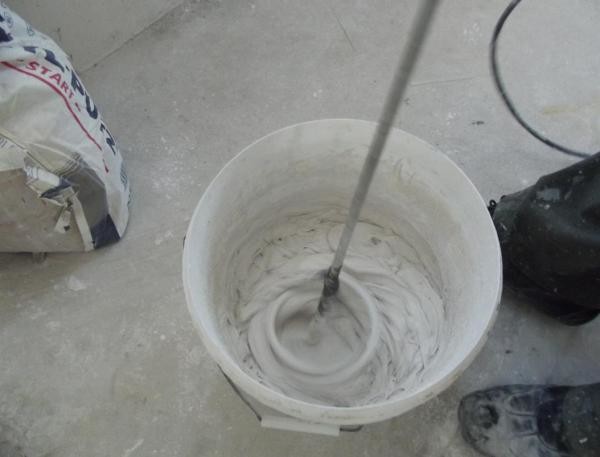How to level walls: tools, methods and popular mixtures for leveling walls, photo and video review
The question of how to align the walls is asked by many apartment owners who have gathered to make repairs on their own. Not so long ago, the range of materials for leveling walls was not great. Today, the situation on the building materials market has changed dramatically, but there are only 2 methods for eliminating irregularities on surfaces:
- their facing GKL;
- plastering with building mixtures.
These wall alignment methods have both positive and negative sides. Those who prefer drywall will not have to deal with the laborious process of preparing walls for plastering. It is enough for them to repair the cracks and fix the crate under the sheets on the walls. In addition, any communications can be hidden under the GKL. However, using sheet materials to level the walls, homeowners significantly reduce its area.
A similar problem does not arise when leveling walls with building mixtures, but the process itself is laborious. Surfaces for plastering need careful preparation. Beacon profiles must be fixed on the walls, relying on which, the rule will distribute the plaster over the surface. In addition, wall leveling compounds are often unable to cope with too large irregularities. However, for those who decide to level the walls with Rotband, it will be easier to cope with the task than for builders who use other compositions in their work.
Characteristics of the mixture "Rotband"
"Rotband" - gypsum plaster, which has a number of advantages over other mixtures. She is:
- excellent contact with most surfaces;
- has high plasticity;
- not prone to cracking and delamination;
- has a relatively small weight;
- dries quickly;
- practically does not shrink;

The disadvantages of the mixture for leveling walls include:
- high price;
- inability to use in rooms with high humidity;
- weak adhesion of the layers of "Rotband" to each other.
True, the last drawback is eliminated if, before applying the next layer, the previous one is treated with a special primer.
When plastering with Rotband, the same tool is used as when working with other mixtures:
- trowels;
- putty knife;
- grater;
- rule.
Surface preparation
Before you start leveling the walls with Rotband, they need to be prepared. They need to be removed:
- wallpaper;
- old paint;
- dust, dirt, greasy stains;
- peeling fragments of plaster.
At this stage, a tool such as;
- brushes;
- spatulas;
- hammer and chisel.

Finally, the remaining dust is removed from the walls with a vacuum cleaner or a damp brush. Significant cracks are best repaired with a cement-sand mortar. After that, the surfaces must be treated with a primer "Betonkontakt" or "Grundirmittel". The latter is produced by Knauf, therefore it is most compatible with Rotband.
First you need to take the rule and check the state of the wall with it. If the walls are fairly even, with differences of no more than 5-7 mm, they can be leveled without installing beacons. Using a tool such as a spatula, "Rotband" is applied to the surface like putty.
In other cases, you have to install beacons. It must be said right away that it is better to purchase plastic profiles, which, after plastering, can be left in the wall. Metal beacons (even galvanized ones) will begin to corrode over time, and rusty spots will definitely show through the wallpaper. You can safely install steel beacons if the wall is subsequently tiled.
Before installing the beacons, “hills” of gypsum plaster are applied to the wall with a spatula. The distance between them in a vertical row should be about 30 cm. The longer the rule, the greater the distance between the "cakes" horizontally, but in any case it should be slightly less than the length of the fixture, since the tool will rest on adjacent walls when leveling the walls. lighthouses.

First, it is better to install beacons closest to the corner parts of the room. They need to be pressed into the “slides” and checked for verticality with a level or plumb line. Between them, pull 2-3 threads and, guided by the cords, install the remaining profiles. Next, you need to additionally check the plane by applying a building level or rule to the beacons (perpendicular to them).
Plastering with "Rotband"
To obtain a quality mixture, it is necessary to follow the manufacturer's recommendations for its preparation.
It is best to prepare the solution using a tool such as a construction mixer or a hammer drill (powerful drill) with a special nozzle. The finished mixture should be worked out within half an hour.
With a trowel, you need to apply a solution between the beacons. Leading the rule on them, you should distribute the solution along the wall. Leveling the surface must begin from the bottom. Excess solution is removed from the device with a spatula and recovered into a container. The solution is again laid in the remaining recesses, and the rule passes through the uneven areas again. In the corners of the room for plastering, it is more advisable to use a corner trowel.

If it is necessary to plaster in several layers, a new layer is applied after the previous one has hardened. Before re-plastering, the dried layer is primed. In addition, cross-shaped notches are made on it. With multi-layer plastering, the rule is used only for finishing alignment. The main tool for applying "Rotband" during preliminary plastering of the surface is a trowel. The leveling process is completed 2-3 hours after plastering by rubbing the surface with a grater moistened with water.
About the simplicity of working with Rotband
It should be noted that even the most distant person from the profession of a builder will be able to level the walls in the apartment with the Rotband mixture. Having gained minimal experience with gypsum plaster, the master will be able to create a surface ready for finishing with almost any material.
Related posts:

